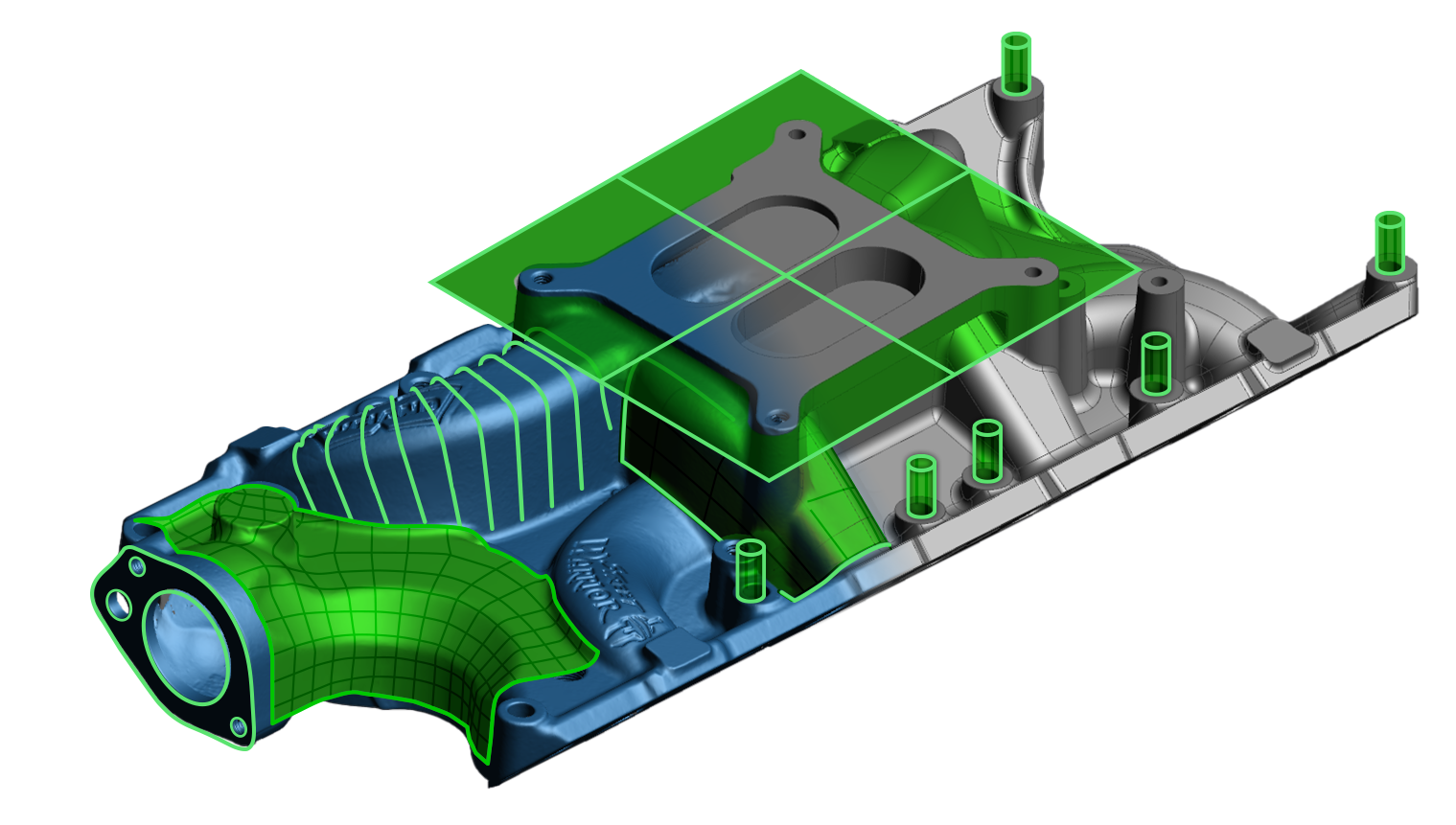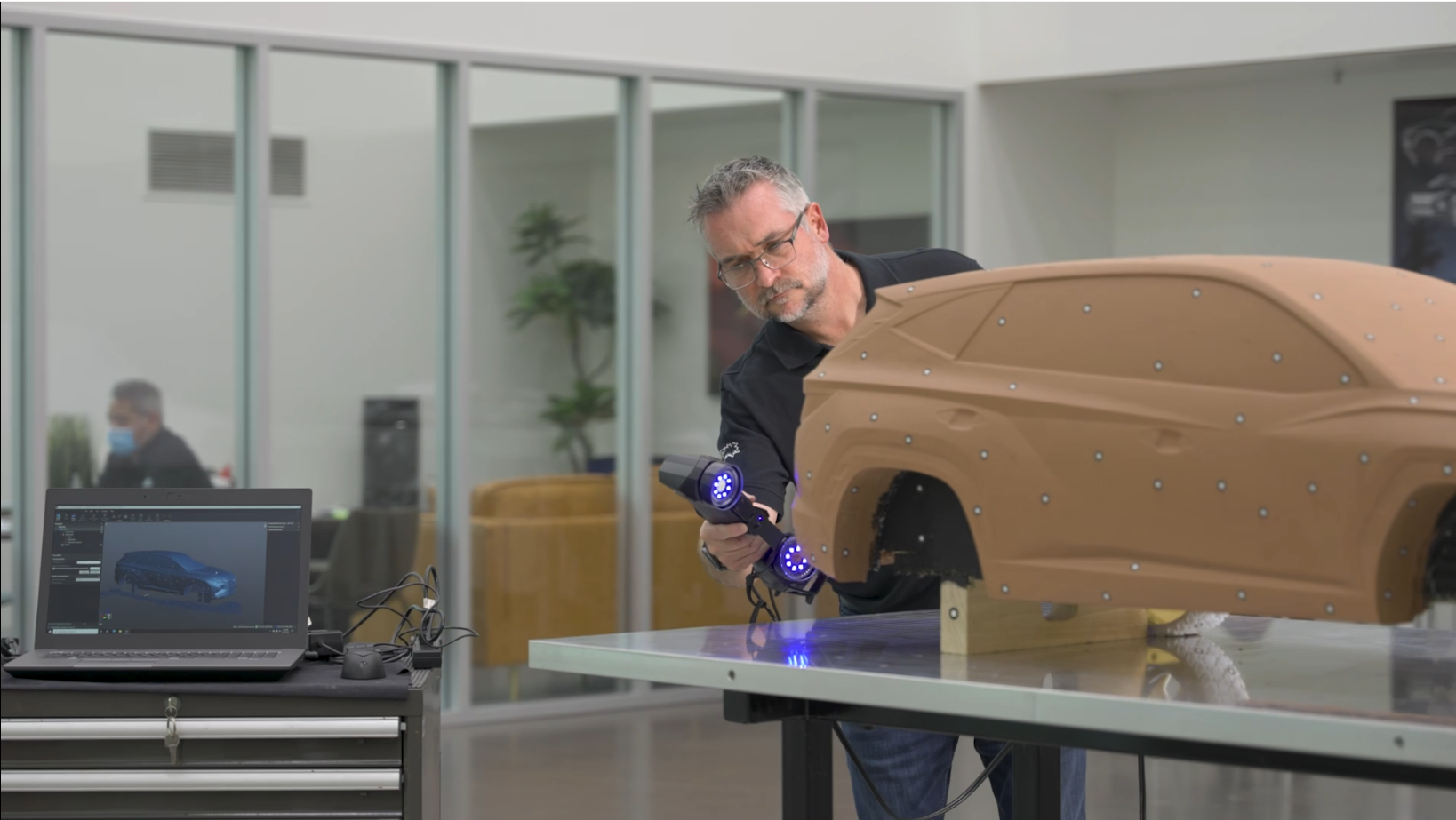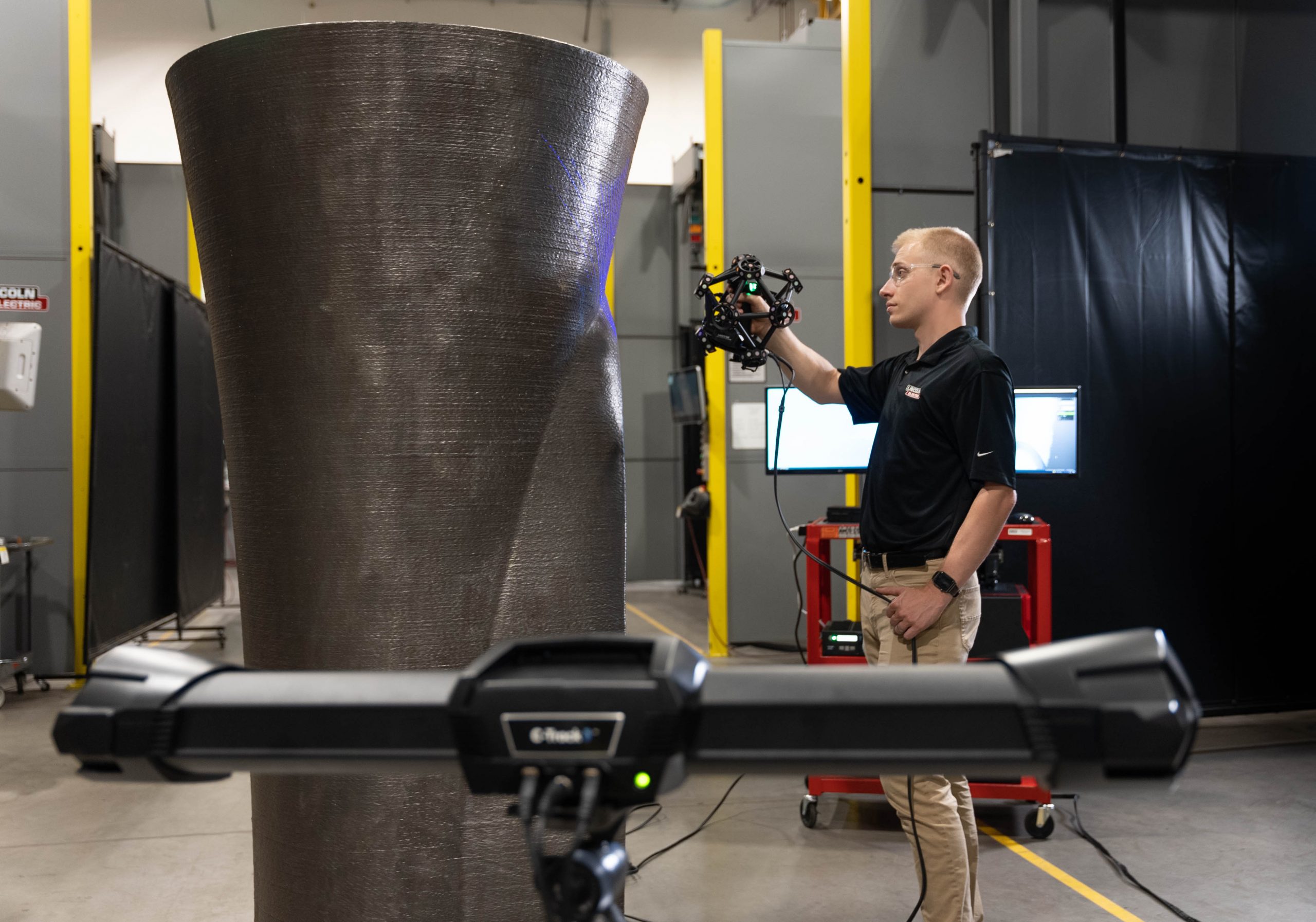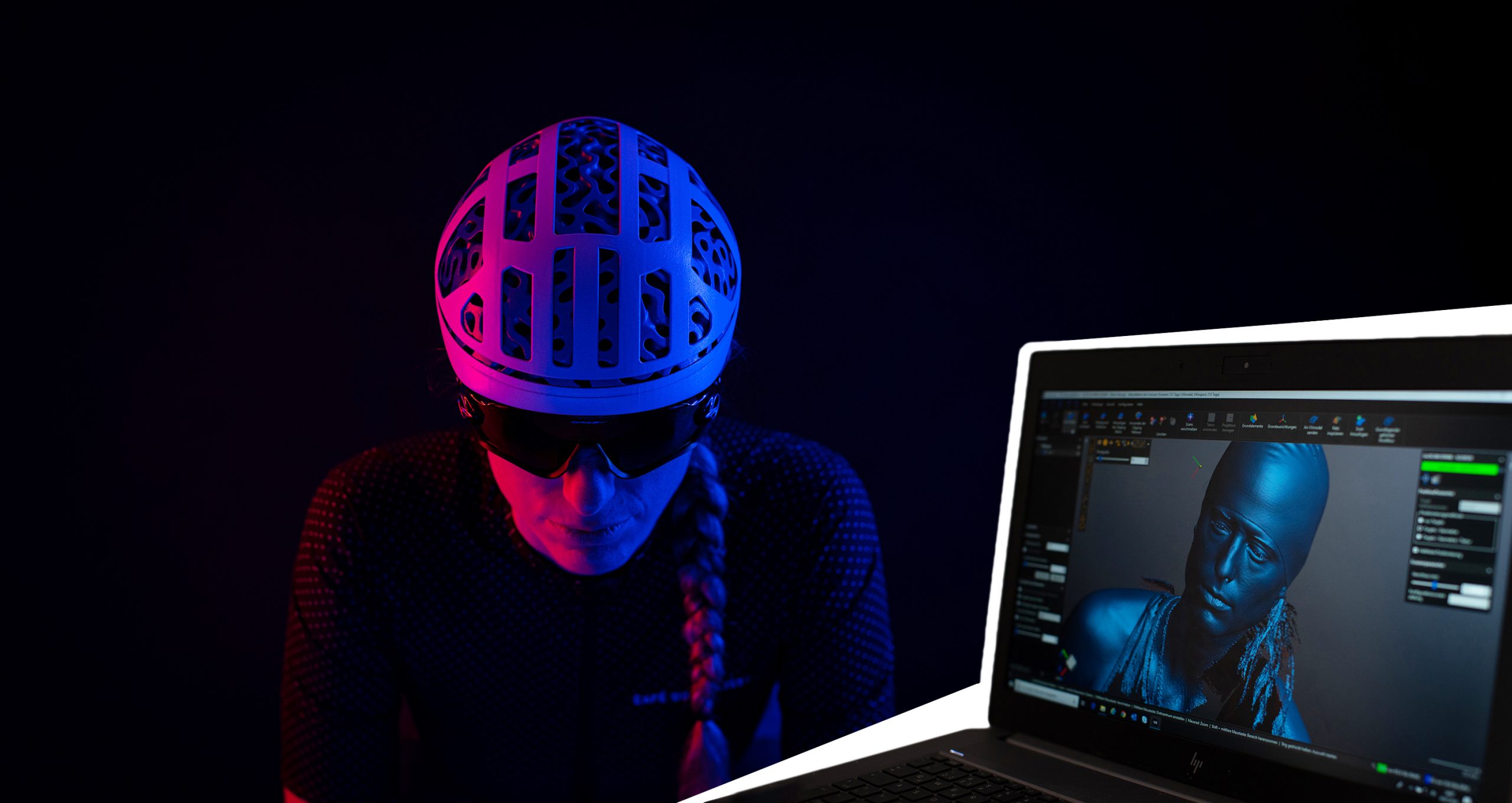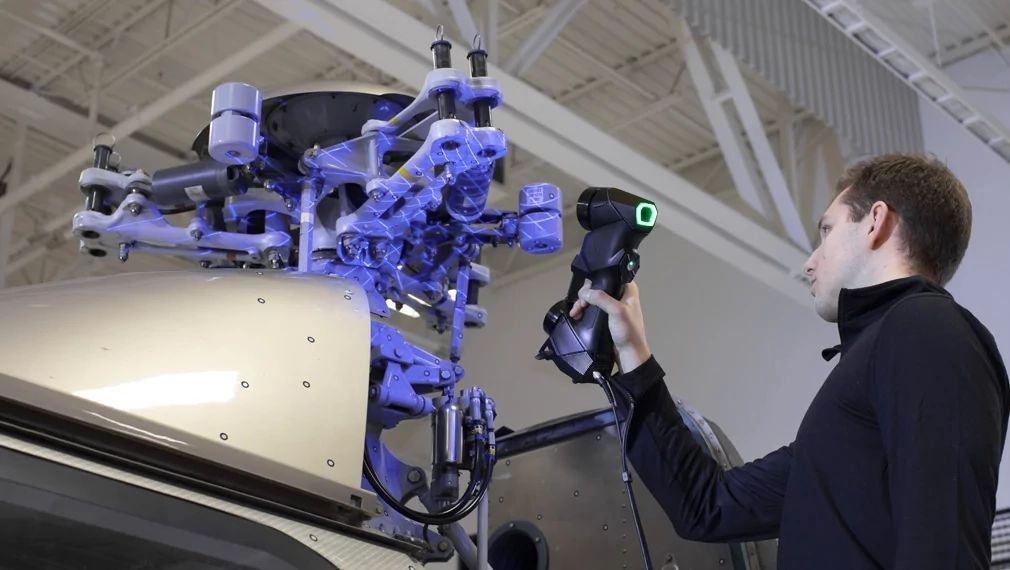November 11, 2024
Mining engineering firm opens new service segment thanks to 3D scanners See the articleOver the last few decades, reverse engineering has become an essential part of product design and production processes used by manufacturers all over the globe. From aerospace to automotive to everyday consumer goods, industrial engineers and product designers rely on reverse engineering when replicating a legacy part without documentation or drawings, analyzing and deconstructing a competitive product, or modifying and improving an existing one. As technology improves, so do the hardware and software utilized to digitize physical parts or assemblies into reliable, accurate, and solid computer-aided design (CAD) models. New metrology sensors, more capable software enabled by faster and cheaper computing, and advances in AI are shaping the future of reverse engineering, opening up more potential applications and making it accessible to a broader range of professionals.
With all that in mind, let’s see what trends will impact the state of reverse engineering in the coming years.
What are the top three trends in reverse engineering for 2023?
Reverse Engineering Trend #1: Rapid Prototyping
Most products manufactured today go through multiple iterations before they roll off the assembly line. This iterative workflow is called “rapid” or “fast” prototyping and refers to techniques used to develop physical prototypes or models of a product or component as quickly as possible to emulate a final product design. In recent years, rapid prototyping has become the go-to method for manufacturers to test and validate design ideas before committing to mass production, lowering the risk of costly mistakes and delays.
Reverse engineering plays a critical role in this workflow, enabling companies to create digital models of existing products or parts that can be used as the basis for rapid prototyping. For example, automotive companies use 3D scanners to capture manufactured parts that fit into an assembly and reverse engineer them as a baseline for new parts instead of starting with the original CAD files. This not only accelerates the product development process but also improves the quality of the final product. The same goes for design studios constantly creating new product designs, be it something as simple as a new toothbrush model or an MRI machine. Starting from a scan rather than from scratch can save tons of time.
With 3D scanners and reverse engineering software becoming smarter, cheaper, and more accessible to non-technical personnel, rapid prototyping will become even more widespread across various domains. Instead of relying on traditional and often slow manufacturing processes such as CNC machining or injection molding, design professionals will opt for light- or laser-based scanning technologies, CAD software, and additive manufacturing to develop accurate, feature-rich prototypes on the fly. Using handheld, portable 3D scanners, they can capture any product or part right on the shop floor and upload the final 3D model into CAD software for further virtual testing and analysis or into 3D printing software to create a rapid, high-fidelity prototype.
Reverse Engineering Trend #2: Additive Manufacturing
The second trend shaping reverse engineering is the increased use of additive manufacturing. Also known as “additive layer manufacturing” or, in some cases, as 3D printing, additive manufacturing is an advanced fabrication process of building three-dimensional parts by joining material layer by layer from a CAD file. Since the 1980s, additive manufacturing technologies have been rapidly developing. Recent advances in hardware, materials, and software have made additive manufacturing accessible to a broader range of businesses, allowing more and more companies to use tools previously limited to a few high-tech industries.
All these could not help but affect the scope of reverse engineering. With far more affordable professional 3D printers, an improving cost-per-part ratio, and the introduction of new printing materials, more businesses can afford additive manufacturing and reverse engineer a more comprehensive range of products cost-effectively.
Many companies already introduce additive manufacturing as part of their reverse engineering routine. For instance, shoe manufacturers use portable 3D measurement technologies to capture the older models, modify them, and 3D print them to see how the new model will look and act in motion before moving on to the production stage. Automotive restoration shops are introducing additive manufacturing for prototyping and creating working parts for vehicles to replace missing ones. Some hospitals, including veterinary ones, integrate 3D printers to develop custom orthotic and prosthetic devices based on reverse-engineered patient scan data.
As both 3D printing and scanning technologies improve, so do reverse engineering and printing software, and more manufacturers will leverage those technologies to streamline their reverse engineering tasks.
Reverse Engineering Trend #3: Virtualization
Another emerging approach that manufacturers are widely integrating into their workflows, along with reverse engineering, is virtualization. Sometimes those two terms are used as synonyms for describing a process of creating a digital model of a physical object, also called a digital twin. However, virtualization goes further and involves analyzing and optimizing a product’s design in a virtual space without physical prototypes and simulating how a product will perform under different operating conditions.
Virtualization is useful for engineering, design, and manufacturing processes, as it enables users to interact with virtual prototypes in a lifelike manner before they move into production. VR and AR also make it easier to test the ergonomics of products before they are made and make changes in virtual environments. In addition, virtual spaces provide workers with an immersive learning experience, such as virtual tours of factories or virtual demonstrations of how to operate machinery. Lastly, different teams can share and access virtual models from different places. This makes it easier for people to collaborate and communicate during product development.
Recent advances in AR and VR, artificial intelligence, and machine learning make virtualization more accessible for a broader range of manufacturers and industries. Virtualization is mostly used in high-tech fields like aerospace, automotive, and manufacturing, but it is becoming more common in construction, architecture, and entertainment. Virtualization is used, for example, to simulate how a building will act in different weather conditions or to make digital sets for movies and TV shows.
COVID-19 and the general trend toward remote work have also made it easier to use virtualization for things like modeling, controlling shop floor simulation processes, planning production, testing, and verifying.
How will this impact reverse engineering, you’ll ask? Since virtualization is becoming more prevalent, it will require creating virtual models of products and spaces that are more realistic than traditional 3D models designed from scratch. This, in turn, will require high-precision scanning technology and reverse engineering software to create clean, high-quality, and solid 3D CAD models that can later be used in a virtual setup.
As virtualization becomes more popular, 3D measurement technologies will become more common. This means that not only technical staff but also other employees will need to learn how to use them. Since both scanners and software are becoming more affordable and operator-friendly, more and more people can use them in a working environment.

